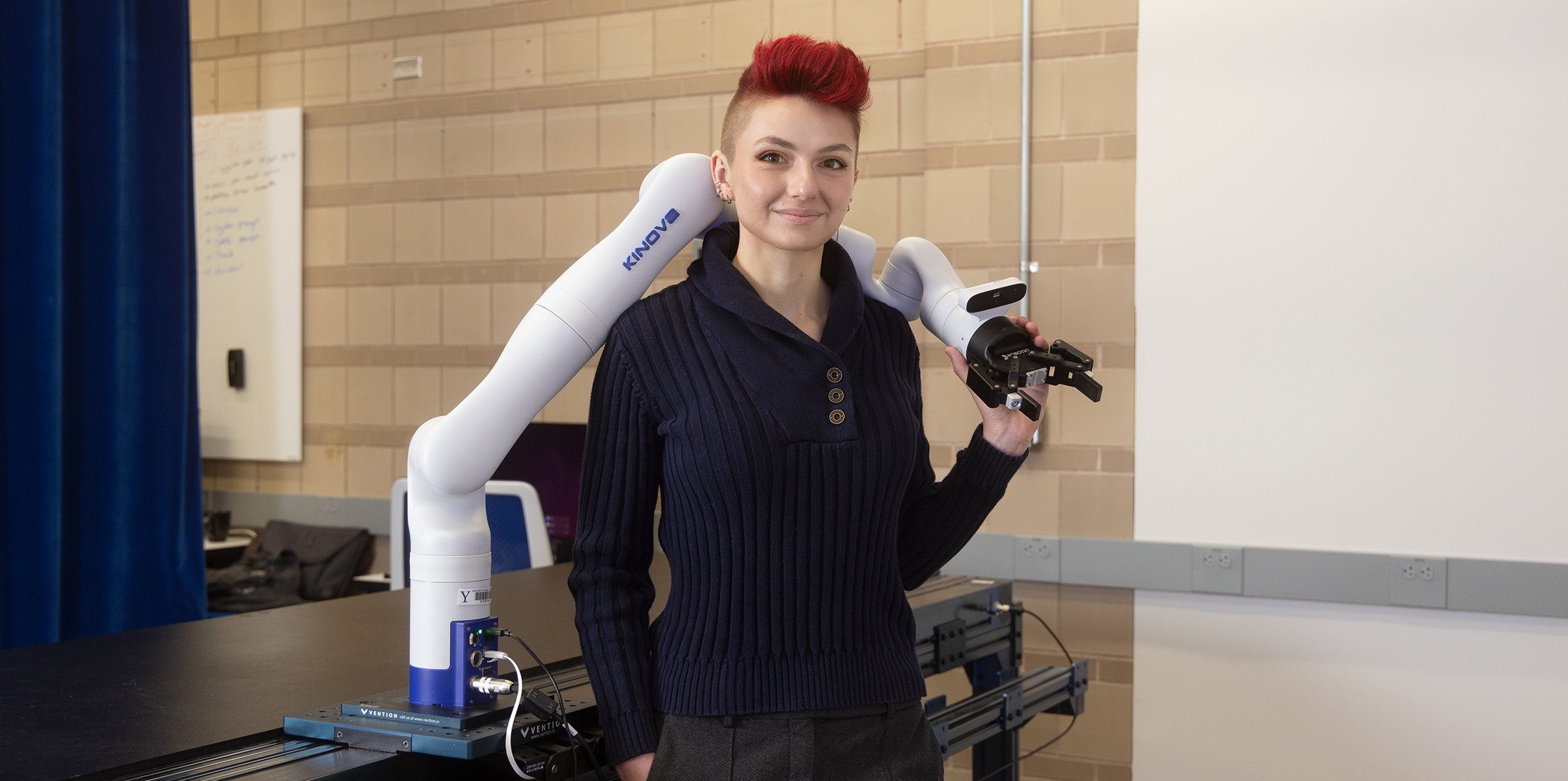Tesca Fitzgerald: Helping robots ask for help
This story originally appeared in the 2024 edition of Yale Engineering Magazine.
With an oven, a coffee maker and fridge, the far side of Danny Rakita’s lab on the third floor of A.K. Watson Hall looks a lot like any workplace break room. Here, though, robots will be doing the meal preparations.
It’s part of Rakita’s effort to program robots to become accustomed to helping out in home care settings.
“We want to make deploying kinds of devices a lot more effective in the real world,” said Rakita, assistant professor of computer science.
Walk upstairs to the lab of Marynel Vázquez and you’ll see a device that she’s programming to help make pizza, as part of a robot-human cooking team. She’s developing ways for robots and humans to work together naturally, attuned to the sort of nuances that come with any seasoned partnership — where all parties are able to pick up on each other’s cues, like tone of voice or facial expressions.
“One of the things that drives a lot of our work is advancing how robots make sense of the social world that they’re in,” said Vázquez, assistant professor of computer science.
The number of roboticists in the School has more than doubled in recent years, and Rakita and Vazquez are just two of the faculty driving the new Engineering initiative known as Robotics for Humanity. As the field of robotics is poised to make an impact on modern life as pervasive and revolutionary as computers did a few decades ago, Yale Engineering is working to help integrate them seamlessly and beneficially into the home, the workplace, in healthcare and other aspects of our lives.
The Robotics labs are already immersed in interdisciplinary collaborations both within the School as well as with Law, Psychology, Medicine, Environment, Architecture, Management, and the Humanities, making Yale uniquely positioned to take on essential human challenges.
The School and the University are investing both resources and space in robotics helping to cement Yale as a leader in Robotics, enhance on-campus visibility and create a “must visit” space for students and visitors. Here’s a look at roboticist Tesca Fitzgerald, and some of the groundbreaking work that’s happening in her lab:
Tesca Fitzgerald: Helping robots ask for help

“If something’s going wrong, a robot should be able to detect that and react accordingly
Tesca Fitzgerald
Assistant Professor of Computer Science
Whether it’s helping with everyday tasks in the home or among workers in a factory, we need to think about robots as teammates.
“We want robots to be flexible to changes within that team,” said Tesca Fitzgerald, assistant professor of computer science. “If something’s going wrong, a robot should be able to detect that and react accordingly.”
Historically, robots have thrived in settings that don’t change much — working at a conveyor belt, for instance. But when people become part of those settings, changes are frequent and can often throw a robot off its game. Fitzgerald’s research focuses on helping robots adapt to those changes — an increasingly critical ability as robots become more common in human environments. Even small changes in a task — like a jar made from different material — can be tricky if a robot hasn’t been trained for that variation.
Fitzgerald develops algorithms that allow a robot to interpret its interactions with a human teacher and enable that robot to ask for help with unfamiliar problems. Part of her research considers Human-in-the-Loop Machine Learning, a widely adopted paradigm for instilling human knowledge in robots. In doing so, Fitzgerald is developing methods for robots to actively learn and adapt to novelty.
“If we assume that these robots will work around people, why not help a robot to ask us for help?” she said.
More Details
Published Date
Apr 1, 2024


